#haus habsburg
Text

King Rudolf I granting his two sons Albrecht and Rudolf II with the duchies of Austria, Styria, Carinthia and Carniola.
13 notes
·
View notes
Text

Archduke Charles II (1540-1590) with a view of Graz. Unknown artist.
#erzherzogtum österreich#erzherzog#steiermark#haus habsburg#house of habsburg#karl ii.#charles ii of styria#kunsthistorisches museum
19 notes
·
View notes
Text

Archduke Ferdinand II (1529-1595), Prince of Tyrol, at about 50 years of age. Unknown artist.
#haus habsburg#house of habsburg#Gefürstete Grafschaft Tirol#erzherzog#erzherzogtum österreich#tirol#österreich#austria
17 notes
·
View notes
Text
Ein bereits schon sehr altes Geschlecht stirbt aus! (4)


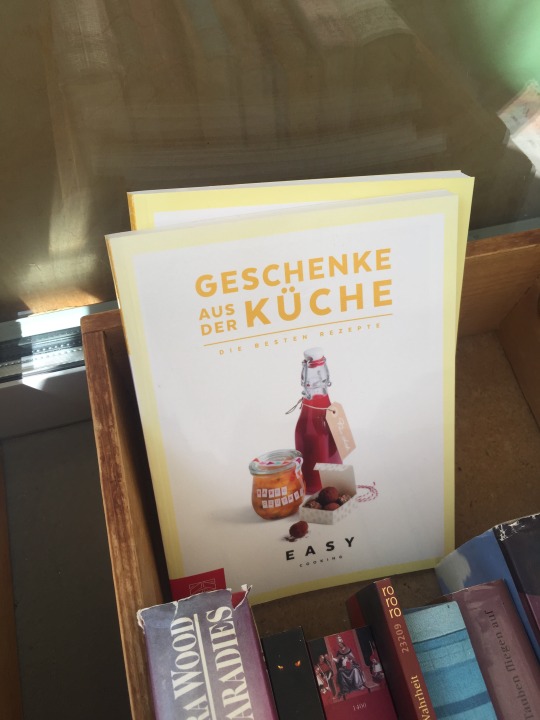
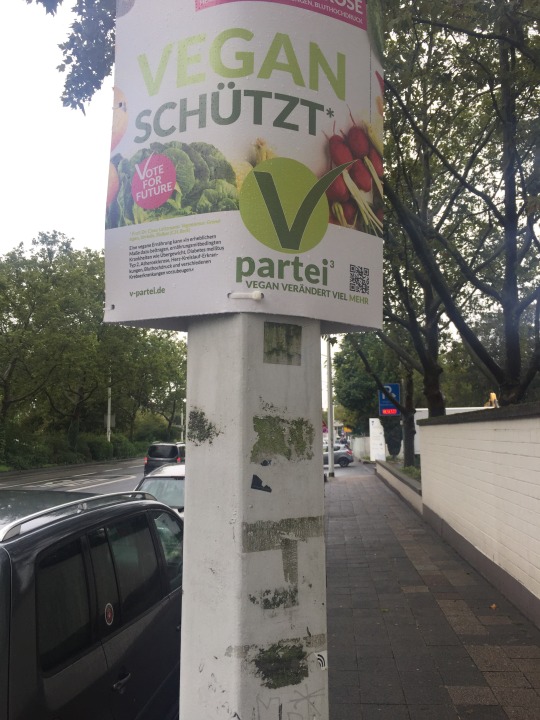




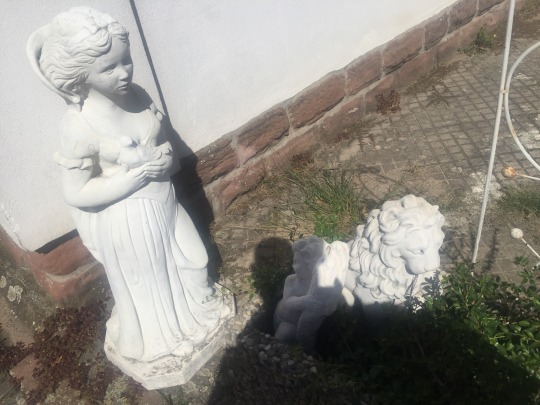

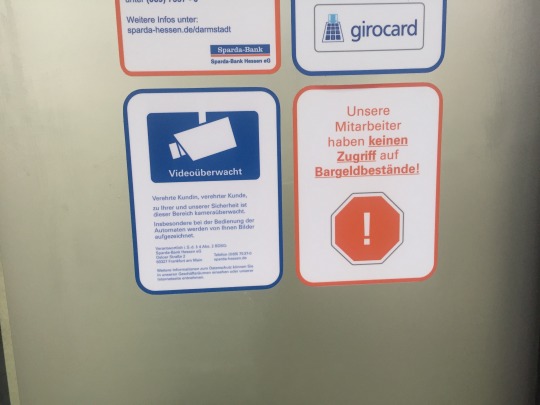
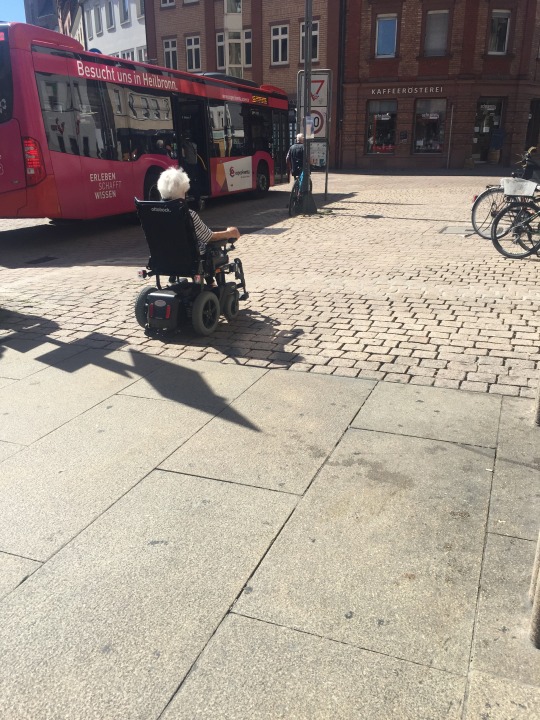



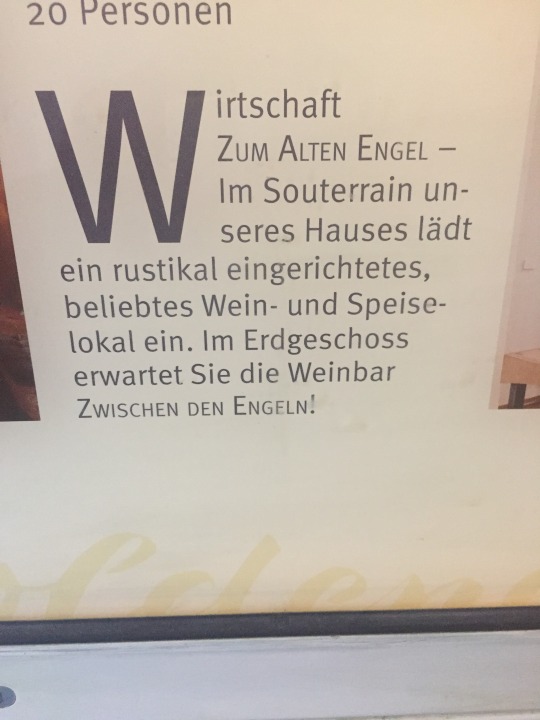

'Warum ist die Vorbesitzer-Familie nicht mehr zum Ausbau ihres Dachgeschosses gekommen??' (*während der gemeinsamen Besichtigung mit dem Immobilienmakler)
'Ist das nicht egal? Denn stellen sie sich einmal vor, es verhielte sich anders, und es wäre rein noch gar nichts fertig und sie muessten das Haus komplett dadurch erst neu erbauen! Sie sollten sich also als potenieller Käufer eher darueber freuen als ärgern! Den Bau nach den eigenen Vorstellungen zu Ende zu bringen, so wie sie sich das wünschen mit ihrer Familie, fällt nun sehr leicht! Selber brauchen sie dafür gar nicht mehr so viel tun!'
'Dennoch, igendwie tun mir die Vorbesitzer schon leid, dass ihnen das so passiert ist, und sie ihren Bau nicht vollenden konnten!'
'Ich kann ja immer noch ein wenig mit dem Preis für sie heruntergehen! Sollte ihnen das bei der Entscheidungsfindung helfen!'






der Mann, das Paar fiel, sie fielen um. (Sie entschieden sich anders!)


Hummeln unter dem Hintern besitzen! (Wespe + Ar***, der Wespenar***, die Vespa italienische)

Neue Strafbefehle und Vollzugsaufträge.




der Hot dog. besondere Essensspezialitäten. 'Einige Männer sammeln Frauen wie andere Briefmarken'.
#Karowinger#alte Geschlechter#Adel#deutsche Kaiser#Haus Habsburg#TUI#All over now baby blue!#My baby feels so blue!#der plötzliche Erkältungstod#Wir frieren uns einen ab#blue#trousers
0 notes
Text
1 note
·
View note
Text
Március 15
Konok Péter
– Sándor! Jössz tizenötödikén? Nagy, közös demonstrációt tartunk! Megmutatjuk, mit kíván a magyar nemzet!
– Na, végre! Ki lesz ott?
– Hát, Vasvári, Jókai, Irányi… tudod, a szokásos csapat. Meg a Józsi.
– Miféle Józsi?
– A Ferenc Józsi.
– Azt hiszem, őt nem ismerem…
– Jaj, dehogynem! Erzherzog Franz Joseph Karl von Österreich aus dem Haus Habsburg-Lothringen.
– Egy Habsburg?!
– Nézd,…

View On WordPress
0 notes
Text
Old Vienna
Anno 1958

𝐖𝐨𝐥𝐥𝐳𝐞𝐢𝐥𝐞 - 𝐃𝐢𝐠𝐥𝐚𝐬 & 𝐒𝐢𝐦𝐩𝐥, 𝐛𝐚𝐝𝐞𝐧 & 𝐝𝐚𝐦𝐩𝐟𝐞𝐧 𝐮𝐧𝐝 𝐞𝐢𝐧 𝐇𝐚𝐛𝐬𝐛𝐮𝐫𝐠𝐞𝐫𝐬𝐭𝐫𝐞𝐢𝐜𝐡
Die Wollzeile lag früher noch außerhalb des ummauerten babenbergisches Stadtgebiets, reichte damals bis zum Wienfluss und ging in die nach Ungarn führende Fernhandelsstraße über (Ungargasse). Die Bezeichnung „Zeile“ deutet auf eine ursprünglich nur einseitige Verbauung hin.
Auf der Nr. 10 wurde in der Wollzeile 1923 das Café Diglas eröffnet, wo sich um die Jahrhundertwende das Café Royal und danach das anrüchige "Picadilly" befunden hatte. Zu den berühmtesten Gästen des Künstlerlokals, wo sich die geistige und kulturelle Elite Wiens traf, zählten O. W. Fischer, Franz Lehár und Karl Farkas (der ab 1950 das Kabarett Simpl leitete). Nachdem das Café im Anschluss andere Gastronomiebetriebe beherbergt hatte, erfolgte 1988 durch den Enkel des Gründers der Rückbau in ein traditionelles Kaffeehaus in Anlehnung an den Originalbetrieb.
Auf der Nr. 11 befand sich Mitte des 18. Jahrhunderts die letzte Badstube von Wien, und im Vorgängerbau des Hauses Wollzeile 24 "Zum roten Mann" von 1818 bis 1898 das erste Dampfbad der Stadt.
An der Adresse Wollzeile 34 entstand 1910 die Singspielhalle Simpl, das nach seiner Schließung 1911 in Jahr später als Biercabaret Simplicissimus wiedereröffnet wurde und sich rasch zu einem der beliebtesten und langlebigsten Kleinkunsttheater Wiens entwickelte. Der Leiter des arisierten Simpl verschwand 1945 spurlos, und nach Otto Grünhaus Oegyn übernahm 1950 Karl Farkas den Direktorposten.
Im Haus Nr. 40 (heute Dr. Karl Lueger-Platz 2) lebte im 19. Jahrhundert Johann Salvator, der in seiner Wohnung mithilfe seines Freundes Kronprinz Rudolf einen Möchtegern-Spiritisten entlarven wollte. Sogenannte Geisterbeschwörer, die gutgläubige Menschen hinters Licht führten, waren den beiden ein Dorn im Auge. Sie organisierten im Februar 1884 eine Privatvorstellung des amerikanischen "Mediums" Harry Bastian in Johanns Wohnung, wo es ihnen während der Séance tatsächlich gelang, den Mann als Hochstapler bloßzustellen, der Wien daraufhin fluchtartig verließ. Die Aktion der beiden Habsburger sorgte für große Heiterkeit im Volk und war in etlichen Zeitungen nachzulesen.
0 notes
Text
[ad_1]
Austria might be landlocked, but it doesn’t disappoint. There’s no time to miss the ocean when you’ve got a plethora of panoramic peaks, cultured cities, and shimmering lakes to experience. But being “stuck” in the heart of Europe is also the country’s best asset for travellers: a two-country, twin-city break in Austria is a dreamy breeze.
Sharing a border with eight different countries and boasting some of Europe’s best-quality day and night train services, hopping across to a neighbouring nation is seamless. You can easily spend a morning exploring Vienna’s culture before enjoying the sunset from Bratislava Castle. Or sink lunchtime pints in Munich’s beer gardens before catching an evening orchestra performance in Salzburg.
With just a couple of hours between the best city breaks in Austria and their border-hopping counterparts, there’s perhaps no other country that offers such a decent choice of twin-city breaks. Whether you’re looking for a long weekend in Austria or are keen to tour three European capitals back-to-back, here’s where to go and how to do it.
Vienna
Paired with Bratislava (Slovakia) or Budapest (Hungary)
Vienna, Austria’s capital city, is an open-air museum. Walking these storied streets, the nation’s Imperial past unfurls in statues, palaces and overflowing art galleries. Most attention goes to the Habsburg dynasty, the dukes and emperors who ruled Austria for some 500 years. Spend a couple of days touring the Schönbrunn or Hofburg Palaces, catching a performance at the world-class Vienna Opera House, and gawping at the art and architecture of the Kunsthistorisches Museum, and you’ll soon see Vienna is arguably Austria’s best city for a historic deep-dive.
Vienna’s Palace of Justice is just one of many impressive buildings in the city
But Vienna isn’t all old. It’s also an ever-evolving creative hub. Don’t overlook the city’s youthful energy found in organic wine bars, abundant street art and inside (and on the funky facade of) the Kunst Haus Wien. When you’re ready to continue class in another country, hop across the border to Slovakia or Hungary. These two nations don’t just share a frontier with Austria, but a long Habsburg history, including the more recent Austro-Hungarian Empire.
Combining your Austria city break with Bratislava is as easy as hopping on a train
Make Vienna a twin-city break with Bratislava (Slovakia) or Budapest (Hungary)
From Vienna, it only takes around an hour by train to reach Bratislava. You can even take a ferry along the Danube if you wish. If you’re not flush on time, a long day trip will cover the highlights of Slovakia’s fairly compact capital. Start in the pretty cobblestoned Old Town, flitting between the medieval Michael’s Gate (you can climb the tower for fantastic views), the main square, and the cluster of statues dotted around the city. Then, head over to Bratislava Castle to enjoy some more panoramas of the city and river.
Budapest, with its multiple bath houses, makes for a great addition to an Austrian city break
Alternatively, getting to Budapest will take around two-and-a-half hours by train. Again, there’s a longer ferry option along the Danube. For Budapest, a day trip simply won’t cut it. You’ll want to spend at least a night or two here as the second half of your Austrian city break. This will allow enough time to explore both sides of the city: Buda and Pest – especially as there is some top-notch nightlife to enjoy.
Budapest’s grand architecture hogs the spotlight, with the mighty Fisherman’s Bastion and (even more beautiful by night) Hungarian Parliament Building taking top billing. But once you’ve got the major sights out the way, you can flit between street art, soothing outside thermal baths – there are heaps in Budapest, but the Széchenyi baths are the most famous – and quirky, cool bars. Some of the best nightlife happens on barges in the river.
Make it a road trip: If you’ve
got a bit longer to spare, why not string these three cities into a road trip, allowing you to see a little beyond the capitals? Logically, it might still make sense just to do Bratislava as a day trip and then drive to (or loop) from Vienna to Budapest to explore a bit more of Hungary and some of Europe’s hidden gems. Just keep in mind when hiring a car, you’ll need to ensure you are allowed to drive it cross-border and be aware that if your rental company doesn’t supply it, you’ll need to get a Hungarian Vignette online before departure – this is essential for paying the e-tolls.
The ‘Friendly Alien’ in Graz is the city’s art museum and design credential kingpin
Graz
Paired with Ljubljana (Slovenia) or Zagreb (Croatia)
Graz is Austria’s second city, yet it remains one of Europe’s most underrated for reasons I don’t understand. It’s got a gorgeous Altstadt (Old Town) where pretty streets and free electric trams make it a joy to explore. Some of the best attractions to visit include the unusually stumpy Uhrturm (Clock Tower), the world’s largest armoury, and a cluster of impressive courtyards that feel more Mediterranean in their design than Austrian. The design credentials don’t stop there, though, as Graz also holds a UNESCO City of Design title, and when you see the funky, alien-like art gallery, you’ll understand why.
But more than that, it’s a really green city. Graz is sustainable and proud. You’ll notice this at all of the farmers’ markets, parks, flower gardens, and along the River Mur, which slices through the student-heavy city. Across the other side, the trendy districts of Lend and Gries are packed with independent boutiques, zero-waste restaurants, and decent nightlife. Put all this together, and Graz is arguably one of the best Austrian cities to visit for a laid-back break, with the bonus of it being just across the border from Slovenia.
Combining your Austrian city break with a side trip to Ljubljana is an easy choice
Make Graz a twin-city break with Ljubljana (Slovenia) or Zagreb (Croatia)
To make your Austria city break a two-country option, hop on a train or bus, and in just over three hours, you’ll arrive in Ljubljana, Slovenia’s pretty, pedestrianised capital city. This is absolutely one of my favourite European capitals, and you’ll want to stay for at least one night to take it all in. The Old Town is anchored around the jade-green canal, with coffee shops and cute wine and cocktail bars along the banks. From the castle above, you’ll get some fantastic views and see why this is known as one of Europe’s greenest cities. Then, in the trendy Autonomous Metelkova quarter, you’ll find Ljublajan’s creative streak in street art and outside art installations.
The fascinating roof of St. Mark’s Church, Zagreb
Alternatively, if you want to twin Graz with Croatia, reaching the capital city of Zagreb will take around three hours by bus or four by train. Often overlooked in favour of Croatia’s gorgeous coast, Zagreb is a surprisingly fun city break. You’ve got all the normal European capital stuff: grand plazas, cathedrals and churches. But there are also some quirky and fascinating museums to visit, such as the Museum of Broken Relationships and the Zagreb Ethnographic Museum. Around the medieval Upper Town, there are some cracking little bars to sample Croatia’s unsung wines.
Make it a road trip: If you have the time, then linking these three cities (and some detours) together as a road trip is a fantastic way to explore. The landscapes around these cities are superb, with Styria’s rolling farmlands and Slovenia’s lush topography, there’s plenty of chances to stop at gorgeous lakes, rivers and caves. You’ll want to ensure that your car rental allows travelling across all three countries, and while Croatia’s toll roads can be paid in cash, making a Croatia road trip straightforward, you’ll want to ask the rental company in Graz about sorting out a Slovenian vignette.
Salzburg is one of the best cities to visit in Austria
Salzburg
Paired with Munich (Germany)
The mere mention of Salzburg usually conjures up thoughts of the Sound of Music, and it’s far from a cliche. Salzburg is certainly Austria’s best city for classical concerts and learning about the country’s most famous composer, Mozart. But what makes Salzburg standout compared to other Austrian cities is just how handsome it looks from every angle. In summer, the streets really come alive for the Salzburg’s Summer Festival, while winter can often bring a sprinkling of snow. It’s one of Austria’s best city breaks year-round, and there’s no shortage of things to do in Salzburg.
Grand architecture is abundant, with the Hohensalzburg Fortress high above the city, the cave-like oldest serving restaurant in the world at St. Peter Stiftskulinarium – which itself is inside an abbey – and heaps of churches, often holding their own concerts. On the city’s outskirts, the magnificent lakes and mountains of the Austrian Alps offer amazing side trips. Although, you’re also only a short hop from one of Germany’s best cities: Munich.
Munich is only a short train away from your Salzburg city break
Make Salzburg a twin-city break with Munich (Germany)
From Salzburg, getting to Munich will take you around 90 minutes by train, and it’s a fairly scenic ride. Of course, Munich is most famous for Oktoberfest, the Bavarian beer-guzzling festival that starts in September. But like Salzburg, you’ll find plenty to entertain here any time of year. Plus, the beers and hearty dishes keep on flowing long after the festival is over. The Old Town is as pretty as you’d expect, with its Glockenspiel clock tower and the standout Town Hall.
If you prefer museums, you’ll be equally spoiled, with plenty of options packed into the Kunstareal cultural quarter. And being Germany, you can’t have a city break without visiting an elaborate palace, something Schloss Nymphenburg is happy to oblige. For this Austrian city break, you’ll want to make it a four-day weekend at least, to allow at least two days in each city.
Innsbruck is one of Austria’s best city breaks year-round
Innsbruck
Paired with Zurich (Switzerland) or Vaduz (Liechtenstein)
Innsbruck is one of Austria’s best city breaks year-round. In winter, this snowy wonderland is a dreamy place for skiing, snowboarding and Christmas markets. However, if you ask me, summer in Innsbruck is even better. You’ve got the fairytale Old Town, with palaces, landmark buildings like the shimmering Goldenes Dachl, fantastic museums, including the Tyrolean Folk Art Museum, and plenty of al fresco dining opportunities. But there’s also the Nordkette range just a short funicular away. Getting into the Alps here is a breeze, as magnificent mountains cradle the whole city. On a weekend break in Innsbruck, it’s just as easy to experience Austria’s culture as it’s the country’s nature.
If you’re looking for the best city in Austria to visit for hiking, this is arguably it. Even if you’re not an avid mountaineer, the two main ranges around Innsbruck have easy access and trails of different abilities. You can tackle the more extreme rock climbing routes in the Karwendel – Austria’s largest natural park – or enjoy easier ambles with views of the emerald-tinted River Inn slicing through Innsbruck from the Bergstation. Once you’ve lapped up everything Innsbruck has to offer, you’re well-placed to hop across to not just one but two other countries.
Liechtenstein Castle above the capital city, Vaduz
Make Innsbruck a twin-city break with Vaduz (Lichtenstein) or Zurich (Switzerland)
From Innsbruck, it takes a little over two hours by train to reach Vaduz, the capital of micronation Lichtenstein. Set along the Rhine River, Lichtenstein’s main pull is its nature and excellent biking routes. On foot, the 75km route along the Liechtenstein Trail will give you an overview of nearly the whole country. In Vaduz itself, the 12th-century hilltop castle above the city and the excellent Modern Art Museum can be a decent day trip from Innsbruck.
Be sure to get a unique passport stamp from the tourism information office.
Zurich at night
Zurich, the largest city in Switzerland, is another fantastic twin-city break from Innsbruck. The train will take between three and four hours, though, so it’s best to spend a couple of nights in each and forget doing a day trip. Wrapped around Lake Zurich, you might imagine the city to be something of a sterile business district, but it is actually rather quaint, with its fetching Old Town and lake views. Museums are plentiful, and while this isn’t the capital of Switzerland, it’s decked out with some of the country’s best cultural institutions – the Swiss National Museum is certainly worth making time for.
Make it a road trip: Nature is the biggest pull for all three of these cities, so you might want to consider taking a road trip from Innsbruck to Zurich, crossing Lichtenstein en route. This will allow you to see more of Tyrol’s spectacular landscapes and mountains before hugging a couple of gorgeous lakes on the final route into Zurich – perhaps even detouring to Lucerne. Again, vignettes for driving are a hassle, so check with the car rental company – I believe these can still be purchased in person near the border.
Linz is often overlooked as a city break in Austria
Linz
Paired with Český Krumlov (Czechia)
Often overlooked, there are plenty of things to do in Linz. Linz is famous for being one of Austria’s best cities for concerts and cultural events; you’re much more likely to find locals enjoying these festivities than fellow travellers. The pretty cobbled streets of the Old Town, soaring spires and the New Cathedral (the stained glass is incredible) are typical Austria, but there are also a few excellent spaces dedicated to modern art and futuristic architecture.
Yet, what makes Linz one of the top cities to visit in Austria is what is found on its peripherals. The city is right on the banks of the Danube. From here, it’s easy to explore the surrounding wine region by car, train or (even better) ferry. The views as you sail along the Danube are beautiful, especially when you reach the UNESCO-listed Wachau Wine region. I’d suggest taking the ferry one way and then riding the train, flanked by vineyards on either side, for the return. The hulking UNESCO-listed Melk Abbey is also well worth a visit – just be warned, it can feel a bit cramped mid-day when all the river cruises dock to take tours.
Český Krumlov is an excellent second stop on your Austrian city break
Make Linz a twin-city break with Český Krumlov (Czechia)
From Linz, you’re well placed to hop across the border to the Czech Republic. Český Krumlov is one of the prettiest medieval towns in Czechia, and it’s only 75 minutes by train. Like a scene straight from a fairytale, Český Krumlov hugs the Vltava River, rising magnificently on either side of the riverbanks. The 13th-century Castle is the main draw, but everything about this timeless town is enchanting. Kayaking or rafting along the river is one of the best ways to see it from a different angle, and being Czechia, there are plenty of decent bars to enjoy a beer pit-stop.
While you can easily visit Český Krumlov as a day trip, I’d really suggest staying at least one night so you can enjoy this popular town after the day-trippers have left. If you have a few spare days, stick around to explore the other cute towns, lakes, and mighty castles of the South Bohemia region.
Pin it: Austria’s best city breaks for border-hopping
[ad_2]
Source link
0 notes
Link
0 notes
Text
Florenz


Florenz ⋆ Toskana Italien Arno Mittelalter Universität
Florenz ⋆ Toskana Italien Arno Mittelalter Universität
Florenz, Provinz-Hauptstadt der Toskana mit Sitz einer bekannten Universität und eines Erzbischofs, wird wegen ihrer malerischen Lage zu beiden Seiten des Arno auch »la Bella« genannt.
Die Stadt war vom Mittelalter an bis zur Neuzeit Mittelpunkt der geistigen Entwicklung Europas.
Von hier ging auch die Schöpfung der italienischen Sprache und Literatur aus. Man denke dabei nur an Dante Alighieri, Giovanni Boccaccio oder Francesco Petrarca. Und von hier erwuchs ebenso die Blüte der italienischen Kunst.

Florenz ⋆ Toskana Italien Arno Mittelalter Universität
Sehenswürdigkeiten:
Piazza della Signora - Palazzo degli Uffizi - Palazzo Strozzi - Accademia di Belle Arti - Ponte Vecchio - Boboli-Garten

Florenz ⋆ Toskana Italien Arno Mittelalter Universität
Geschichte:
50 v. Chr. erhält »Florentia« die Stadtrechte.
1282 reißen die Zünfte die Regierung an sich. Ihre Priori (Vorsteher) treten als Signoria an die Spitze der Verwaltung.
1302 wird Dante auf Lebenszeit aus seiner Heimatstadt Florenz verbannt.
1434 kommt die reiche Kaufmannsfamilie Medici an die Macht. Ihre bedeutendsten Mitglieder sind Cosimo Il Vecchio und Lorenzo Il Magnifico . Unter diesen beiden wird die Republik Florenz in Europa Mittelpunkt von Kunst, Wissenschaft, Handel und Geldverkehr.
1494 besetzt Karl VIII. von Frankreich Florenz und die Medici werden vertrieben.
1498 stirbt der Bußprediger Savonarola, ein Gegner der Medici, als Ketzer.
1512 kehren die Medici nach Florenz zurück.
1532 wird Alessandro di Medici von Karl V. als erblicher Herzog eingesetzt, regiert aber nur fünf Jahre.
1537 wird Alessandro von seinem Vetter Lorenzino ermordet. Nachfolger wird der junge Cosimo I.
1569 wird Cosimo I. von Paps Pius V. als Großherzog bestätigt.
1737 sterben die Medici aus. Das Haus Lothringen erhält die Toskana als Reichslehen. Habsburg-Lothringen herrscht bis 1859.
1865 Florenz wird Hauptstadt des neuen Königreichs Italien.
Florenz - Toskana Italien Arno Mittelalter Universität
Read the full article
0 notes
Text
Haus Habsburg

La Casa de Habsburgo fue una de las dinastías más importantes y longevas de Europa, que gobernó gran parte de Europa Central durante siglos. La casa tenía su origen en el siglo XI en Suabia, Alemania, y su expansión territorial comenzó en el siglo XIII, cuando Alberto I de Habsburgo fue elegido rey de los romanos.
A lo largo de los siglos, los miembros de la Casa de Habsburgo gobernaron en diversos territorios, incluyendo Austria, Bohemia, Hungría, España y otros. Durante su apogeo en el siglo XVI, los Habsburgo gobernaron un vasto imperio que se extendía por gran parte de Europa y América del Sur.
La Casa de Habsburgo es conocida por su apoyo a las artes y las ciencias, y por su mecenazgo de artistas como Beethoven y Mozart. También es famosa por su papel en la política europea, incluyendo su larga rivalidad con los franceses y su papel en las guerras religiosas en Europa.
La dinastía reinante del Imperio Austrohúngaro era la Casa de Habsburgo, que tenía su origen en el siglo XI y había gobernado diversos territorios en Europa, incluyendo Austria y Hungría, desde el siglo XIII. La Casa de Habsburgo fue la dinastía más importante y longeva del Imperio Austrohúngaro, y muchos de sus miembros ocuparon el trono imperial a lo largo de su historia.
El emperador Francisco José I, que gobernó el imperio desde 1848 hasta su muerte en 1916, fue miembro de la Casa de Habsburgo. Su esposa, la emperatriz Isabel (también conocida como Sisi), también pertenecía a la nobleza bávara y era descendiente de la Casa de Wittelsbach.
En la actualidad, el Imperio Austrohúngaro está gobernado por Józsua Von Habsburg, y su línea sucesoria será seguida por István Von Habsburg, Sterling Von Habsburg, Isolde Von Habsburg y Lukács Von Habsburg.
0 notes
Text

Marie, Duchess of Burgundy (1457-1482).
#royaume de france#maison de valois#valois bourgogne#duché de bourgogne#marie de valois#duchesse de bourgogne#archduchess#erzherzogin#haus habsburg#erzherzogtum österreich#full length portrait#house of habsburg#full-length portrait#house of valois
5 notes
·
View notes
Text
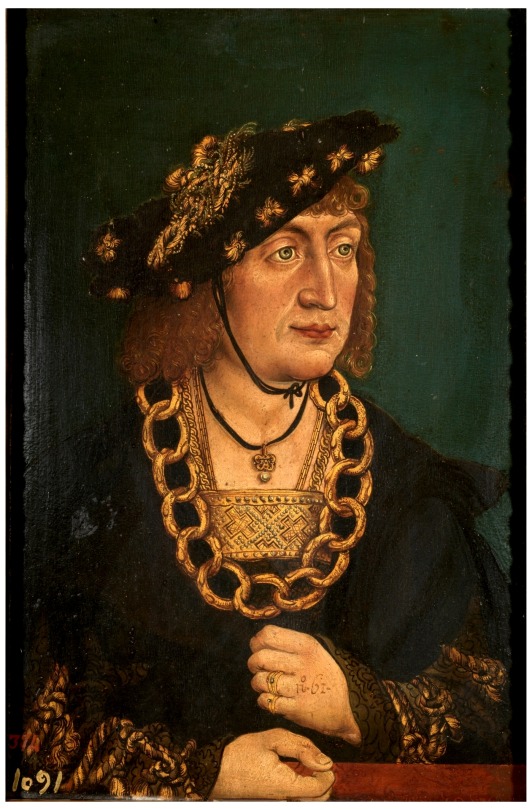
Frederick III of Germany. Attributed to Hans Wertingen.
#hans wertingen#haus habsburg#german aristocracy#heiliges römisches reich#holy roman empire#holy roman emperor#king of ittaly#re d'italia#regno d'italia#house of habsburg#erzherzogtum österreich#frederick iii#museo del prado
8 notes
·
View notes
Text
Dogmatische Völkerwanderung.
In dieser Woche stand beim Talk im Hangar 7 auf Servus TV tatsächlich mal wieder das Thema Asyl auf der Tagesordnung. Alter Schwede, kaum ein Thema generiert mehr "Bloodsport" Momente. Es geht immer die Post ab wenn man auf dieses Thema zu sprechen kommt. Es sei denn man besitzt Talk Runden so, dass im Prinzi alle einer Meinung sind.
Ich war also darauf eingestellt, dass ich wieder Sachen zu hören bekomme, die ich so seit Jahren, im immer gleichbleibenden O-Ton, zu hören bekomme. So kam es dann auch. Eine Humanistin meldete sich zu Wort und wartete mit schrägen Vergleichen auf. Tja, Menschen sind schon immer gewandert. Sie nahm Bezug auf Kroaten, die vor 400 Jahren ins Habsburg Reich eingewandert sind. Es ist völlig klar und unstrittig, dass man in angrenzende Länder flieht wenn der Akttülle Lebensmittelpunkt irgendwelchen dramatischen Veränderungen unterworfen ist. Selbstverständlich flieht man Hals über Kopf mit den Möglichkeiten, die einem zur Verfügung stehen. Man wird auch einfallsreich um sein Ziel zu erreichen.
Wenn Humanisten eisern und dogmatisch daran festhalten jeden einen Asylgesuch stellen zu lassen, der an passender Stelle das Wort "Asyl" sagt, kommen wir irgendwann in einer schwierige Gemengelage. AUs diesem Grund hat man gewisse Hürden eingebaut. So wurde entschieden, dass niemand ein Recht auf Asyl hat, der bereits ein sicheres Drittland betreten hat. Die EU ist ein Verbund, der aus ausschließlich sicheren Ländern besteht. Auf dem Boden kann man eigentlich kaum nach Deutschland kommen.
Humanisten argumentieren immer moralisch aufgeladen. So befand die eine Humanistin, dass Menschen aus Indien, Bangladesch und Pakistan nur deshalb abwandern, weil wir sie ausbeuten. Meine Meinung dazu: Das tun wir nicht! Sie sollte mal ein Geschichtsbuch lesen. Diese Länder befinden sich längst auf der Schwelle zu Industriestaaten. Aus unserer Perspektive scheinen marode Industriebrachen und Kinderarbeit unwürdig und katastrophal. Aus deren Sicht ist es ein Aufstieg zu allem was sie vorher gemacht haben. Ich meine das nicht zynisch. Als zu Zeiten der Industrialisierung Baumwolle maschinell gesponnen wurde, war das ein gigantischer Entwicklungsschritt im Vergleich zum entbehrungsreichen Acker bestellen in grauer Vorzeit. Wir haben diese Veränderung auch durchlebt. Westliche Humanisten argumentieren immer so, als hätte der liebe Gott uns von Haus aus bevorteilt. Dabei hatten wir hier auch solche Verhältnisse wie in Bangladesch. Heute kann man sich das natürlich nicht mehr vorstellen. Es muss den Leuten aber klargemacht werden.
Es sind nicht die Fabrikarbeiter aus Bangladesch die nach Europa wollen. Die sind ja schon in einem besseren Job untergebracht als sie es zuvor jemals waren. Entweder waren sie zuvor arbeitslos oder zerstampften irgendwelche Pfefferkörner mit den Füßen. Und Leute die nicht in solchen Fabriken unterkommen, kratzen alle Familienvermögen zusammen. Es ist de facto nichts anderes als vor 150 Jahren, als Europäer in die Vereinigten Staaten wollten. Hier darf man aber auch nicht den Fehler machen Asyl und Arbeitsmigration zu verwechseln. Die USA haben nicht jeden hineingelassen. Noch an den Häfen wurden Menschen zurück auf Boote geschickt. Diese hatten zuvor die teure Reise bereits bezahlt. Durch ihre Zurückweisung standen sie vor den Trümmern ihrer Existenz.
Gegen Arbeitsmigration kann keiner wirklich etwas haben. Doch bei diesem Verfahren sind uns die Antragsteller jedoch bekannt und man kann planen. Asyl ist nicht zum Stopfen freier Stellen gedacht. Asyl ist dazu gedacht Leib und Leben zu sichern. Eine ehrenwerte Sache wie ich finde.
Die Leute lügen sich in die Asche wenn sie Wanderbewegungen vor 400 Jahren mit der heutigen Situation vergleichen. De facto ist Völkerwanderung noch dasselbe wie zu anderen Zeiten. Die Mechanismen sind nahezu identisch. Nur die Technologie ist heute eine ganz andere. Früher wanderte man zu Fuß oder mit dem Pferdewagen. Es war kaum möglich Kontinente zu überqueren. All das ist heute möglich. Und mit netten Sonntagsreden werden wir dieser Herausforderung nicht Herr.
0 notes
Photo
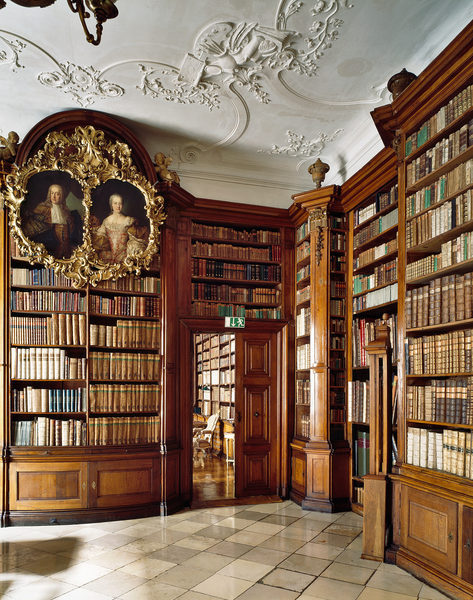
Bibliotheca Theresiana in Vienna
via @catherinedefrance
from @heavyanddissolved
#maria theresia#erzherzogin von österreich#franz ii stephan von lothringen#kaiser des heiligen römischen reiches#haus habsburg#österreich-löthringen#wien#vienna
72 notes
·
View notes
Text
1 note
·
View note